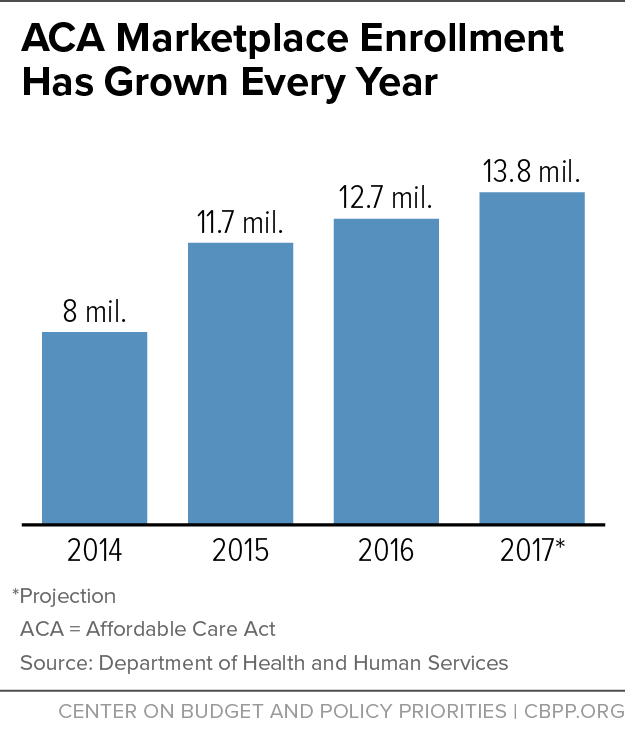Commentary: Even As Insurance Market Improves, GOP’s ACA Repeal Would Kill It
End Notes
[1] “Ryan: Obamacare is in ‘death spiral,’” Washington Post, January 5, 2017, https://www.washingtonpost.com/video/national/ryan-obamacare-is-in-death-spiral/2017/01/05/375a49da-d366-11e6-9651-54a0154cf5b3_video.html.
[2] Virgil Dickson, “ACA signups continue to outpace last year, hitting 11.5 million,” Modern Healthcare, January 10, 2017, http://www.modernhealthcare.com/article/20170110/NEWS/170119983.
[3] “Understanding Recent Developments in the Individual Health Insurance Market,” Council of Economic Advisers Issue Brief, January 2017, https://www.whitehouse.gov/sites/default/files/page/files/201701_individual_health_insurance_market_cea_issue_brief.pdf.
[4] Deep Banerjee, “The ACA Individual Market: 2016 Will Be Better Than 2015, But Achieving Target Profitability Will Take Longer,” S&P Global Ratings, December 22, 2016, https://morningconsult.com/wp-content/uploads/2016/12/12-22-16-The-ACA-Individual-Market-2016-Will-Be-Better-Than-2015-But-Achieving-Target-Profitability-Will-Take-Longer.pdf.
[5] Cynthia Cox, et al., “Explaining Health Care Reform: Risk Adjustment, Reinsurance, and Risk Corridors,” The Henry J. Kaiser Family Foundation, August 17, 2016, http://kff.org/health-reform/issue-brief/explaining-health-care-reform-risk-adjustment-reinsurance-and-risk-corridors/.
[6] Linda J. Blumberg, Matthew Buettgens, and John Holahan, “Implications of Partial Repeal of the ACA through Reconciliation,” Urban Institute, December 2016, http://www.urban.org/sites/default/files/publication/86236/2001013-the-implications-of-partial-repeal-of-the-aca-through-reconciliation_0.pdf.
[7] “How Repealing Portions of the Affordable Care Act would Affect Health Insurance Coverage and Premiums,” Congressional Budget Office, January 2017,

